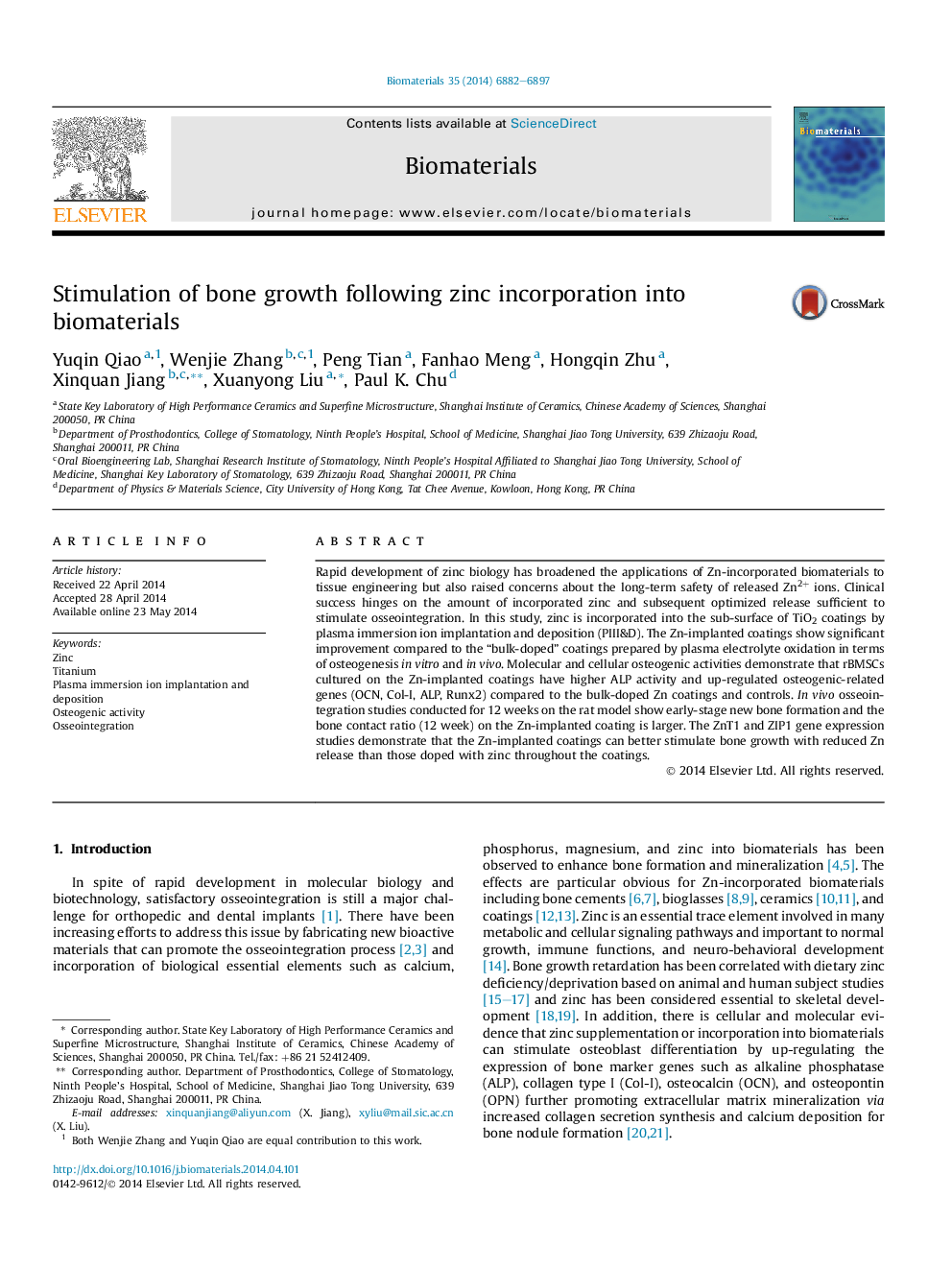| Article ID | Journal | Published Year | Pages | File Type |
|---|---|---|---|---|
| 10227528 | Biomaterials | 2014 | 16 Pages |
Abstract
Rapid development of zinc biology has broadened the applications of Zn-incorporated biomaterials to tissue engineering but also raised concerns about the long-term safety of released Zn2+ ions. Clinical success hinges on the amount of incorporated zinc and subsequent optimized release sufficient to stimulate osseointegration. In this study, zinc is incorporated into the sub-surface of TiO2 coatings by plasma immersion ion implantation and deposition (PIII&D). The Zn-implanted coatings show significant improvement compared to the “bulk-doped” coatings prepared by plasma electrolyte oxidation in terms of osteogenesis in vitro and in vivo. Molecular and cellular osteogenic activities demonstrate that rBMSCs cultured on the Zn-implanted coatings have higher ALP activity and up-regulated osteogenic-related genes (OCN, Col-I, ALP, Runx2) compared to the bulk-doped Zn coatings and controls. In vivo osseointegration studies conducted for 12 weeks on the rat model show early-stage new bone formation and the bone contact ratio (12 week) on the Zn-implanted coating is larger. The ZnT1 and ZIP1 gene expression studies demonstrate that the Zn-implanted coatings can better stimulate bone growth with reduced Zn release than those doped with zinc throughout the coatings.
Keywords
Related Topics
Physical Sciences and Engineering
Chemical Engineering
Bioengineering
Authors
Yuqin Qiao, Wenjie Zhang, Peng Tian, Fanhao Meng, Hongqin Zhu, Xinquan Jiang, Xuanyong Liu, Paul K. Chu,
